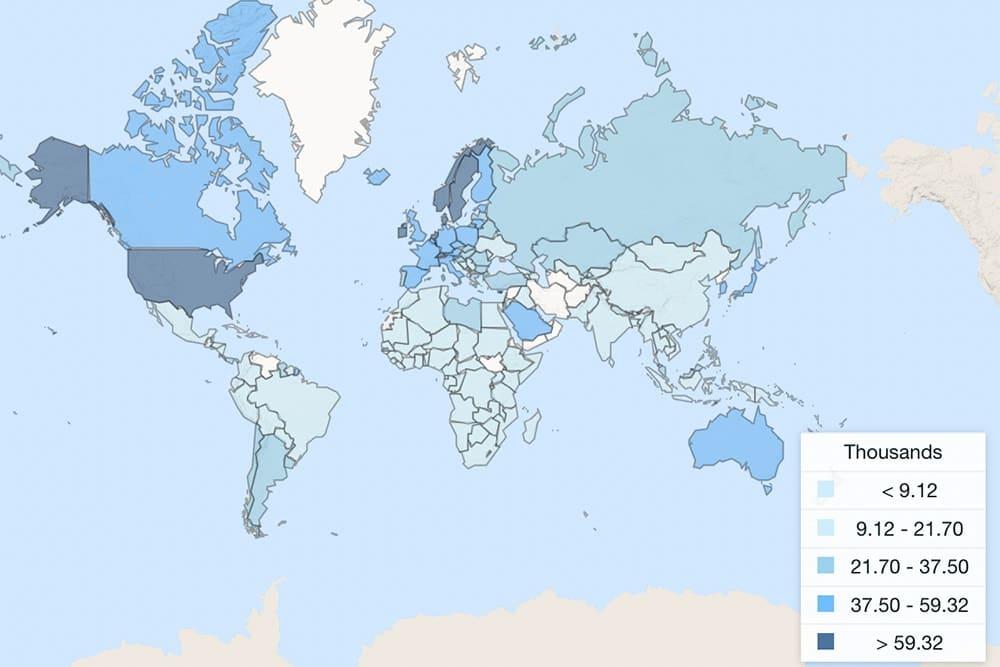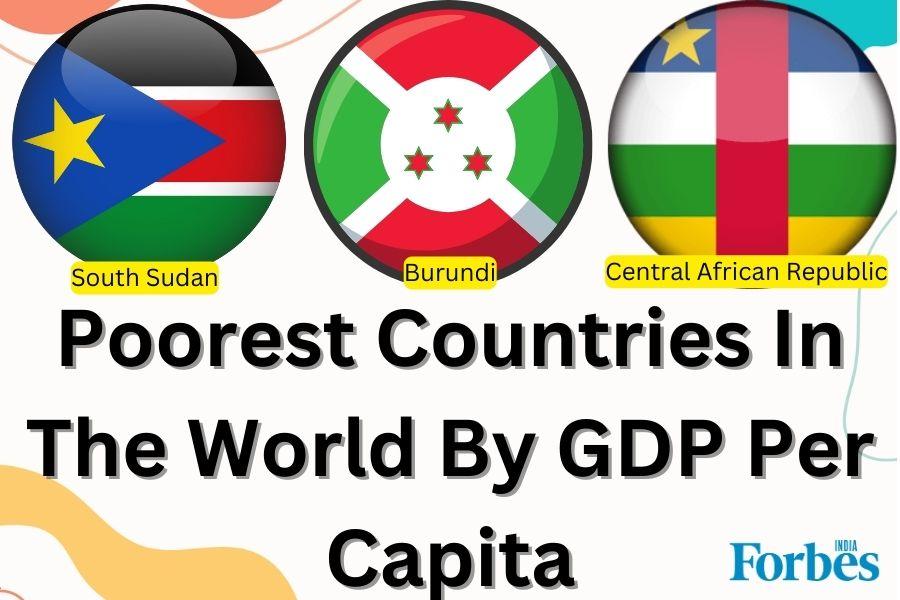In an era marked by escalating tensions and economic uncertainty, the ramifications of trade policies ripple far beyond the borders of industrialized nations. As the United States intensifies its trade war under the leadership of former President Donald Trump,the fallout is poised to wreak havoc on some of the world’s most vulnerable economies. A recent analysis by the Africa Financial Review (AFR) underscores the precarious position of the globe’s poorest nations—many of which rely heavily on exports and foreign aid—at a time when tariffs and trade barriers are reshaping international markets. This article explores the economic vulnerabilities of these nations, revealing how the ongoing dispute threatens to exacerbate poverty levels, hinder growth, and provoke social unrest. As the dynamics of global trade evolve, the stakes have never been higher for those already teetering on the edge of survival.
Impact on Vulnerable Economies in Sub-Saharan Africa
The escalating trade conflicts initiated by the Trump administration have started to reverberate through the fragile economies of Sub-Saharan Africa, which are particularly vulnerable to global economic shifts. Countries in this region rely heavily on agricultural exports, minerals, and foreign direct investment, which could all be adversely impacted. The imposition of tariffs and trade barriers could lead to decreased demand for their key exports, ultimately disrupting livelihoods and straining local economies. Key vulnerabilities include:
- Dependence on External Markets: Many Sub-Saharan nations export a notable percentage of their goods to countries affected by trade tensions, exposing them to fluctuations in demand.
- Investment Flows: Uncertain trade relations may discourage foreign investment, which is crucial for progress and economic stability.
- Commodity Price Volatility: As global markets react to trade war announcements, commodity prices may fluctuate, impacting revenue for resource-rich nations.
Furthermore,the socio-economic effects of these trade disruptions could be severe,exacerbating existing inequalities within these societies.Vulnerable populations, particularly in rural areas, depend on agriculture and informal sectors for their income, leaving them at the mercy of international trade dynamics.A potential lack of food security could arise, risking increased malnutrition and health-related issues among the most impoverished. The consequences may manifest in several ways:
| Impact Area | Potential Outcome |
|---|---|
| Food Security | Increased malnutrition rates due to rising food prices. |
| Employment | Loss of jobs in sectors reliant on exports, especially agriculture. |
| Health | Greater incidence of poverty-related health issues. |
Supply Chain disruptions and Food Security Concerns
the ongoing trade war, predominantly shaped by protectionist policies, is generating significant ripple effects across global supply chains, particularly impacting the world’s most vulnerable regions. As tariffs escalate and trade barriers rise, the cost of importing essential goods, including food items, is rising sharply. This disruption threatens local economies that rely heavily on imported agricultural products, causing food prices to soar and consequently hampering accessibility for impoverished populations.The ramifications of these policies can be observed through increasing malnutrition rates and worsening health outcomes in the most affected countries.
Moreover, the fragility of these nations amplifies the repercussions of such supply chain interruptions. Many countries, ill-equipped to foster resilient agricultural practices or choice supply routes, face the dire prospect of prolonged food insecurity. Key factors exacerbating the crisis include:
- Increased Costs: Higher tariffs lead to inflated prices on food imports.
- Supply Chain Delays: Logistical complications hinder timely delivery of essential goods.
- Market Instability: Fluctuating commodity prices discourage local agricultural investment.
As protectionist measures persist, the interplay between trade policy and food security will demand urgent attention and innovative solutions from the global community. It is imperative to create frameworks that not only stabilize markets but also prioritize the needs of the most vulnerable populations.
The Role of International Aid in Mitigating Economic Decline
As the impacts of escalating trade tensions reverberate through the global economy, international aid emerges as a critical buffer for nations at risk of severe economic decline. The ability of these countries to withstand the pressures of trade wars hinges significantly on the support they receive from foreign governments and humanitarian organizations. Aid can provide essential resources that mitigate the immediate effects of tariffs and export restrictions, allowing these nations to stabilize their economies and protect their most vulnerable populations. Through direct financial assistance, food aid, and developmental projects, international support can sustain essential services that might or else collapse under the weight of economic hardship.
Moreover, the role of international aid in building long-term resilience cannot be overstated. It equips nations with the tools they need to diversify their economies, shift away from dependency on volatile exports, and foster lasting growth. key aspects of this aid strategy include:
- Capacity Building: Training local communities to enhance skills and promote self-sufficiency.
- Infrastructure Development: Investing in essential services like transportation, healthcare, and education.
- Policy Support: Assisting governments in developing policies that create a more conducive environment for trade and investment.
In a landscape strained by geopolitical conflicts, the timely delivery of aid will not only alleviate immediate economic pressures but also pave the way for sustainable development, ultimately helping the world’s poorest nations emerge stronger in the face of adversity.
strategies for Resilience: How Poorest nations Can Adapt
To foster resilience amid economic turbulence,the poorest nations must embrace a multifaceted approach to adaptation that prioritizes both sustainability and innovation. This involves enhancing local capacities through a strong emphasis on education and skill development. By investing in human capital, nations can empower their workforce to engage more effectively in the global market. Additionally, governments should focus on strengthening local industries by promoting entrepreneurship and supporting small-to-medium enterprises (SMEs). This grassroots-level approach not only diversifies the economy but also mitigates dependency on external markets that can be volatile during trade wars.
Moreover, fostering regional cooperation can offer significant advantages, allowing nations to pool resources and expertise. These collaborations can lead to shared infrastructure projects,joint trade initiatives,and collective bargaining power in international negotiations. Another pivotal strategy lies in leveraging technology for agricultural and industrial efficiency, thus enabling nations to capitalize on their inherent resources. by introducing advanced practices, such as sustainable farming techniques and renewable energy sources, countries can enhance productivity while addressing climatic challenges.emphasizing such adaptive measures can significantly strengthen their economic foundations against external shocks.
Trade Policy Recommendations for Sustainable Growth
The shifting landscape of global trade necessitates strategic adjustments to protect the most vulnerable economies from the fallout of aggressive trade policies. Policymakers should prioritize inclusive trade agreements that foster economic resilience by emphasizing the needs of the world’s poorest nations. This includes the establishment of preferential tariff rates that cater to developing countries, coupled with time-limited exemptions for key industries. These measures can definitely help mitigate the adverse effects of trade wars, ensuring these nations can access larger markets without being stifled by exorbitant tariffs.
In addition, investment in sustainable infrastructure is crucial to empower low-income countries, providing them the tools to compete on a global scale. Supporting initiatives that enhance capacity-building, such as technology transfer programs and skills training, can equip local populations to innovate and diversify their economies. Moreover, establishing multilateral trade frameworks aimed at reducing market volatility will enhance stability, allowing poorer nations to engage in trade on more equal footing. Collaborating on environmental standards can also ensure that economic growth does not come at the expense of sustainable practices,fostering a more equitable global economy.
The future of Global Trade Dynamics Amidst Uncertainty
The impact of trade wars on the world’s poorest nations reveals a troubling trend as they stand on the precipice of economic turmoil. Countries dependent on foreign investment and trade find themselves particularly vulnerable amidst shifting policies and tariffs. The decisions made by larger economies, notably the United States, reverberate worldwide, often leaving developing nations grappling with reduced access to vital markets. These nations are facing challenges such as:
- Increased tariffs: Higher import costs diminishing trade competitiveness.
- Supply chain disruptions: Interruptions that impact goods availability.
- decreased foreign direct investment: Investors seeking more stable, robust markets.
- Economic instability: Heightened risk of recession as global trade slows.
The future will likely see a continued divergence in global trade dynamics, leaving the most economically vulnerable nations struggling to adapt. Efforts to diversify trade partnerships could become critical for survival, as reliance on a single market can prove disastrous when trade tensions rise. In light of these changes, stakeholders should be cognizant of potential repercussions, which could manifest as:
| Potential Impacts | Outcomes |
|---|---|
| Reduced GDP Growth | Economic decline leading to increased poverty rates. |
| Limited Access to Essentials | Higher costs for food and healthcare necessities. |
To Conclude
the implications of Trump’s trade war extend far beyond the borders of the United States, casting a long shadow over the world’s poorest nations. As tariffs rise and trade relationships become strained, these vulnerable economies face an uncertain future marked by increased hardship and instability. The delicate fabrics of their societies, already challenged by poverty and limited resources, could unravel further under the pressure of escalating trade tensions.
the international community must take heed of these developments and work collaboratively to mitigate the impacts on those least able to withstand them. It is crucial for policymakers to recognize the interconnectedness of global economies and to strive for solutions that promote equity and sustainability rather than exacerbating inequality. As the trade war unfolds,vigilance is needed to ensure that the voices of the world’s most vulnerable populations are not drowned out in the cacophony of economic competition. The path forward will require not only strategic economic policies but also a commitment to humanitarian principles that safeguard the futures of those most in need.

